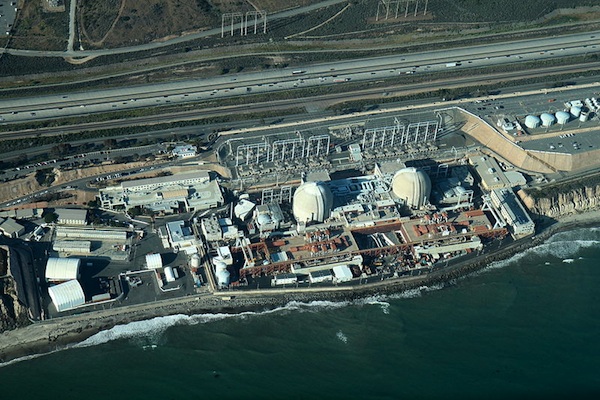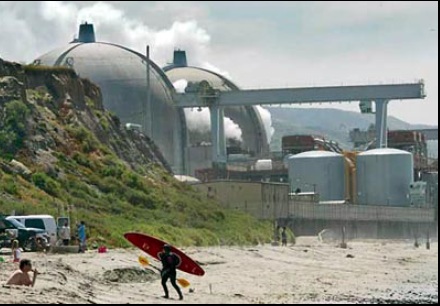The Sierra Club and other environmental and community groups fought and won in their efforts to shut the San Onofre Nuclear Generating Station in 2013. The issue was the site's history of safety risks and technology failures at the plant operated by Southern California Edison.
But Angeles Chapter’s San Onofre Task Force and other activists had little time to celebrate as it immediately became clear that over 3,000 rods of spent nuclear fuel were stored in cooling pools on-site, and there was no approved remote storage location to which they could be moved.
 |
| San Onofre Nuclear Generating Station south of San Clemente was shuttered June 7, 2013. |
For more than three decades, the Sierra Club has supported identifying and licensing one or more "geologic repositories" -- long-term remote storage locations to which spent nuclear fuel could be moved once and kept forever. The only exception to this policy is that where fuel is stored at an "at risk" nuclear plant site, it could be moved to another such site.
The problem with that approach is the increasing congestion of stored fuel at plants over the last 30 years. All waste storage is far beyond design capacity and today no plant wants to receive fuel from another plant.
During the same 30-year period, the U.S. Department of Energy (DOE) has been responsible for developing remote, permanent storage but no site has been licensed. The reasons are many but the result has left the U.S. in an unacceptable position on nuclear waste management.
 |
| The key issue now for the San Onofre nuclear generator site is to make a plan for disposal of the nuclear waste that remains at the plant. |
Recognizing this, the DOE is currently holding a series of hearings around the country on “consent-based siting” as an interim step. Communities would have to agree to a storage site being developed near them. Waste from several plants would be consolidated at such sites, and storage would be for an interim time period, not permanent. Some sites might be managed by private operators as well as public agencies.
The next public meeting on this topic will be held by the San Onofre Community Engagement Panel on from 5:30 to 9 p.m. on June 22 at the San Juan Capistrano Community Center, located at 25925 Camino Del Avion. All Sierra Club members to attend for the briefings from 5:30 to 7:30 and the public comment period from 7:30 to 9 p.m.
The San Onofre Task Force will follow this and other discussions closely. It will continue to advocate the Sierra Club goal of permanent, remote storage as the best approach and ultimate goal. Members will listen carefully as standards and a process for interim storage are discussed, and evaluate proposed approaches in terms of environmental protection or environmental justice.
Removing the nuclear waste is the final step at San Onofre. Nationally the topic is more alive than it has been in years. The Chapter encourages the discussion of alternatives to storing waste on-site at San Onofre, while insisting that standards for any form of off-site storage be maintained at a level that will protect the environment and public health and safety.
Glenn Pascall is chair of the San Onofre Task Force.